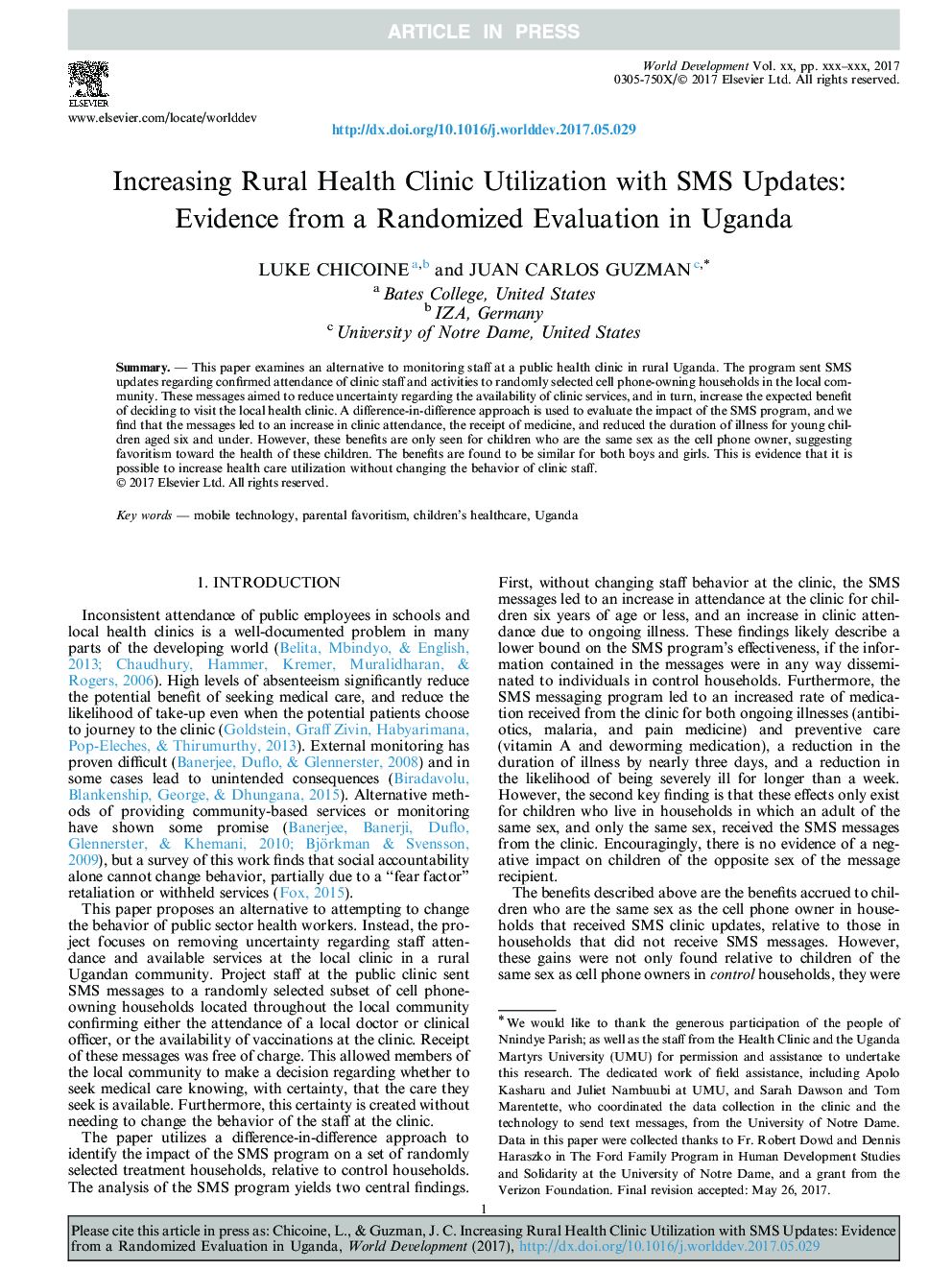| Article ID | Journal | Published Year | Pages | File Type |
|---|---|---|---|---|
| 5105112 | World Development | 2017 | 12 Pages |
Abstract
This paper examines an alternative to monitoring staff at a public health clinic in rural Uganda. The program sent SMS updates regarding confirmed attendance of clinic staff and activities to randomly selected cell phone-owning households in the local community. These messages aimed to reduce uncertainty regarding the availability of clinic services, and in turn, increase the expected benefit of deciding to visit the local health clinic. A difference-in-difference approach is used to evaluate the impact of the SMS program, and we find that the messages led to an increase in clinic attendance, the receipt of medicine, and reduced the duration of illness for young children aged six and under. However, these benefits are only seen for children who are the same sex as the cell phone owner, suggesting favoritism toward the health of these children. The benefits are found to be similar for both boys and girls. This is evidence that it is possible to increase health care utilization without changing the behavior of clinic staff.
Keywords
Related Topics
Social Sciences and Humanities
Economics, Econometrics and Finance
Economics and Econometrics
Authors
Luke Chicoine, Juan Carlos Guzman,
